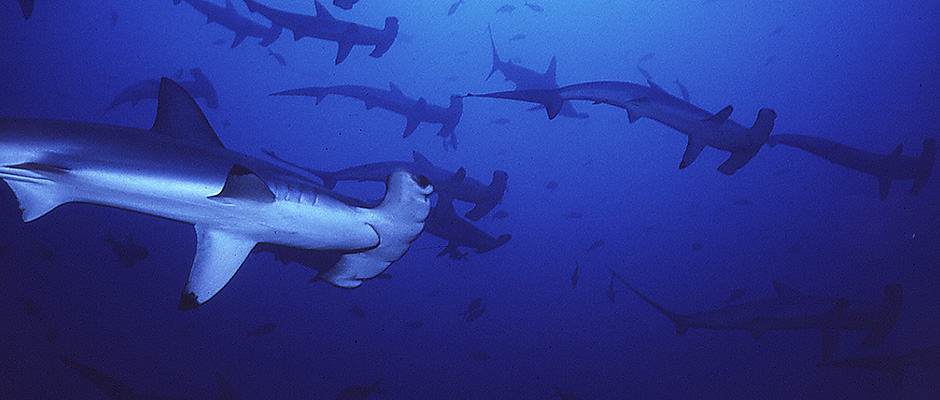Share this article
Hammerhead Maps Show Gap in Protection, Study Finds
A map detailing the journey of a young scalloped hammerhead shark (Sphyrna lewini) swimming between coastal and offshore waters in the Gulf of California may expose a gap in current efforts to protect the endangered species, according to a new online study published in the journal Animal Biotelemetry.
Scalloped hammerheads are endangered with some populations around the world suffering a 50 to 90 percent decline in fewer than 35 years; and the populations living in the Gulf of California seem to be no exception. “In Mexico in the 80s, the sea of Cortes was one of the best places to see these beautiful and majestic animals but at present it’s hard to see even a few,” said Mauricio Hoyos-Padilla, a researcher from Pelagios Kakunja, Mexico and one of the study’s authors, in a press release.
In order to understand juvenile shark behavior, Hoyos-Padilla and a team of researchers baited and captured one male and two female juvenile sharks in the Gulf of California. The researchers surgically implanted a tracking device at the base of each shark’s pelvic fin. Every 30 seconds, the device recorded the depth, sea temperature, and light level of the shark’s surrounding environment. The tag also had a reward notice attached to it, so when local fishermen caught one of the female sharks north of La Paz Bay nearly a year later they knew who to contact. The researchers retrieved the tracking device, downloaded the data, and mapped the shark’s movements throughout the gulf.
Over the course of 10.5 months, the young, three-foot-long, female hammerhead swam over 2,000 miles. Initially, the shark stuck to warm shallow waters along the coast, but eventually swam to offshore habitat within the Gulf of California. By day, the female shark probably swam around offshore islands and underwater mountains called seamounts with schools of other juvenile and adult hammerheads. At night, it would swim away to hunt for prey such as squid and fish at depths of up to 880 feet. “This is the first time we have an idea of their behavior at this stage,” said Hoyos-Padilla.
Understanding where hammerheads swim helps scientists and wildlife managers identify key habitat areas and determine where to focus their efforts. Mexico prohibits commercial fishing from large vessels within 50 nautical miles of the coast, which should help protect sharks in near-shore, nursery areas; but James Ketchum, another of the study’s authors, thinks that may not be enough. “Because of their dependence on both coastal and offshore waters during their early life-stages, we think that they may be more susceptible to fisheries than previously thought,” said Ketchum in the press release. “Current protective measures in Mexico may unfortunately be insufficient.
Header Image: Image Credit: Seawatch.org








